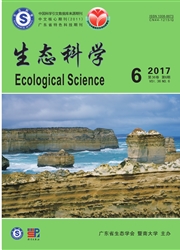

 中文摘要:
中文摘要:
通过在莫莫格湿地测量芦苇的生态特征、叶绿素含量和光化学效率,对水深梯度影响芦苇生理生态的规律进行了分析。芦苇株高、生物量、叶绿素含量以及最大光化学效率与湿地水深呈显著正相关关系,这些指标随水深的增加而提高;芦苇盖度与水深呈负相关关系,随着水深增加,芦苇盖度逐渐降低:芦苇最大光化学效率在6-7月份达到最大,进入8月后下降,同时芦苇生长减慢。结果表明,6~7月份是芦苇生长的关键时期,应尽量满足芦苇需水要求。15cm水深是芦苇最小生态水位,而35-45cm的水深能确保芦苇最佳生长状态,是芦苇生长的最适宜生态水位。
 英文摘要:
英文摘要:
By investigating of the reed ecological characteristics in field, and measuring the chlorophyll content and the maximum photosynthesis efficiency, the influence mechanism of water depth on the coohysiological responses of reed in Momoge Wetland was analyzed. The results showed that there was a strong positive correlation between water depth and indices including the plant height, biomass, chlorophyll content and maximum photosynthesis effciency. Along with the increase of water depth, these indices increased. There was a negative correlation between the water depth and coverage of reed. Along with the increase of water depth, the coverage decreased. The maximum photosynthesis efficiency in June and July was better than that in August. In August, it decreased, suggesting that the photosynthesis was retarded. Our results suggested that June and July are the key time for the growth of reed, and the water requirement should be guaranteed. The water depth of 15 cm is the minimum ecological water depth. The water depth of 35-45 cm is the optimum ecological water depth which can guarantee the best growth of reed.
 同期刊论文项目
同期刊论文项目
 同项目期刊论文
同项目期刊论文
 期刊信息
期刊信息
